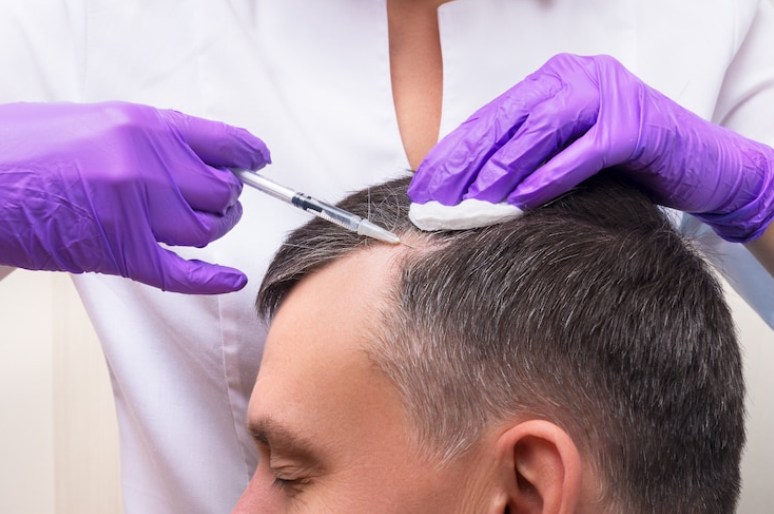Introduction
Hair is often described as the crowning glory of one’s appearance, but for many individuals, hair loss can be a source of insecurity and frustration. Hair restoration, a field that has witnessed significant advancements in recent years, offers hope to those seeking to regain their lost locks and confidence. In this article, we will explore the science and art behind hair restoration, shedding light on the various methods available and the factors to consider when deciding on the best approach for you.
Understanding Hair Loss
Before delving into hair restoration techniques, it is crucial to understand the causes of hair loss. Hair loss, or alopecia, can result from various factors, including genetics, hormonal changes, medical conditions, medications, and lifestyle choices. The most common type of hair loss in both men and women is androgenetic alopecia, commonly known as male pattern baldness or female pattern baldness.
Androgenetic alopecia is primarily caused by a genetic predisposition and hormonal imbalances, leading to the miniaturization of hair follicles. Over time, these follicles produce thinner, shorter, and less pigmented hair until they eventually cease to produce hair altogether. Other factors such as stress, poor nutrition, and certain medical conditions can exacerbate hair loss.
Hair Restoration Options
The journey to hair restoration begins with a consultation with a qualified dermatologist or hair restoration specialist. They will assess the extent of your hair loss, the underlying causes, and your overall health to determine the most suitable treatment options. Here are some of the most common hair restoration methods:
Medications: FDA-approved medications like minoxidil (Rogaine) and finasteride (Propecia) can be effective in slowing down or even reversing hair loss. Minoxidil is a topical solution applied to the scalp, while finasteride is taken orally to inhibit the effects of the hormone dihydrotestosterone (DHT), which contributes to hair loss.
Platelet-Rich Plasma (PRP) Therapy: PRP therapy involves drawing a small amount of the patient’s blood, processing it to concentrate platelets, and then injecting the platelet-rich plasma into the scalp. Platelets contain growth factors that can stimulate hair follicles, promoting hair growth.
Low-Level Laser Therapy (LLLT): LLLT devices emit low-energy laser light to stimulate hair follicles and improve hair growth. These devices are available in various forms, including laser caps and combs.
Hair Transplant Surgery: Hair transplant surgery is a more invasive but highly effective option for hair restoration. There are two main techniques: follicular unit transplantation (FUT) and follicular unit extraction (FUE). In FUT, a strip of hair-bearing scalp is removed from the donor area and dissected into individual grafts for transplantation. FUE involves harvesting individual hair follicles directly from the donor area using a specialized tool. The grafts are then transplanted into the balding or thinning areas.
Scalp Micropigmentation (SMP): SMP is a non-invasive procedure that involves tattooing the scalp with pigments to create the illusion of hair follicles and a closely shaved head. It is an excellent option for individuals who prefer a short, buzzed hairstyle.
Factors to Consider
Choosing the right hair restoration method is a crucial decision that should be made after careful consideration of several factors:
Severity of Hair Loss: The extent of hair loss plays a significant role in determining the most appropriate treatment. Mild to moderate hair loss may respond well to medications or non-invasive therapies, while severe hair loss often requires surgical intervention.
Budget: Hair restoration treatments vary widely in cost. Medications and non-invasive therapies are generally more budget-friendly, while hair transplant surgery tends to be more expensive. It’s essential to consider your budget and financing options when making a decision.
Recovery Time: Surgical procedures like hair transplants may require downtime for recovery, while non-invasive treatments typically have minimal to no downtime. Consider your lifestyle and how much time you can afford to take off work or social activities.
Long-Term Commitment: Medications like minoxidil and finasteride require ongoing use to maintain results. Surgical procedures and SMP are typically considered permanent solutions.
Realistic Expectations: It’s essential to have realistic expectations about the results of hair restoration. While these treatments can significantly improve the appearance of your hair, they may not provide a full head of hair identical to your original density.
Consultation: Consult with a qualified specialist who can assess your individual case and recommend the most suitable treatment plan. They can provide valuable insights and answer any questions or concerns you may have.
Conclusion
Hair restoration is an evolving field that offers hope and solutions to those experiencing hair loss. With the advancement of science and technology, there are numerous effective methods available to help individuals regain their confidence and a fuller head of hair. The key is to consult with a knowledgeable professional, assess your unique needs and circumstances, and make an informed decision on the best approach for you. Whether it’s through medications, non-invasive therapies, or surgical procedures, the journey to reclaiming your confidence and your crowning glory is within reach.





